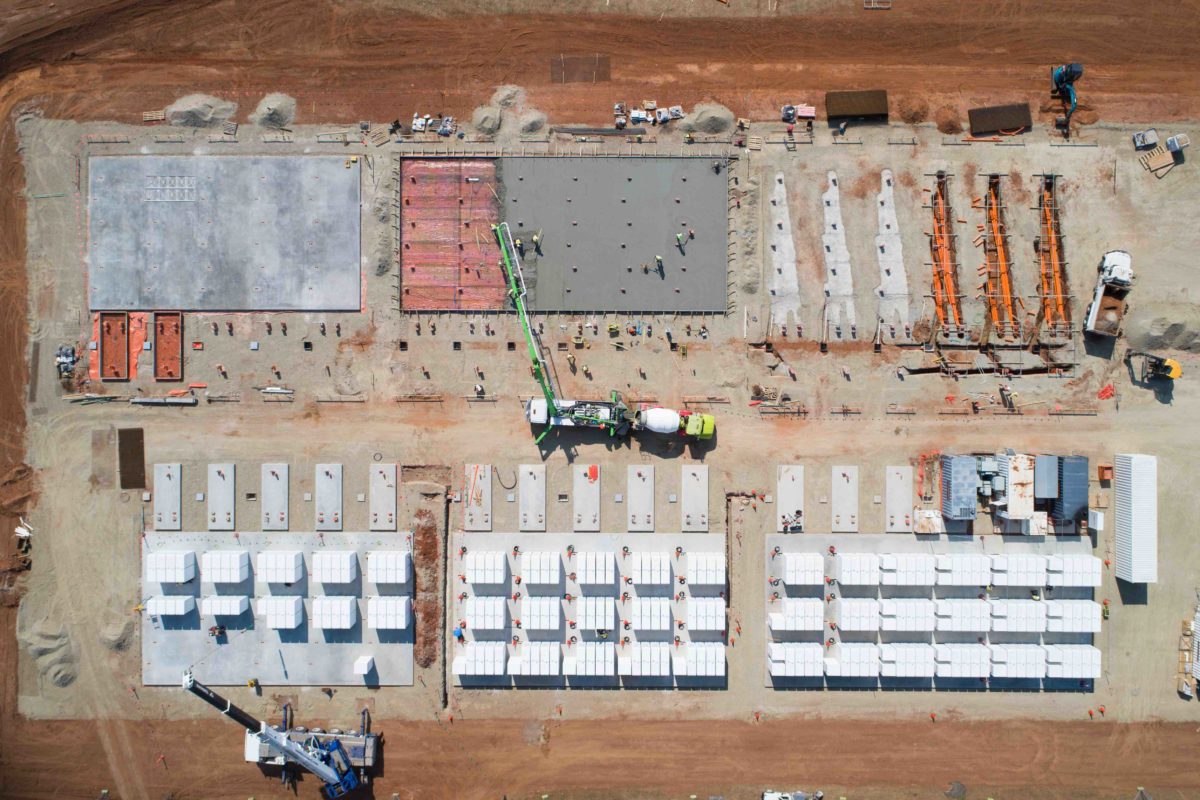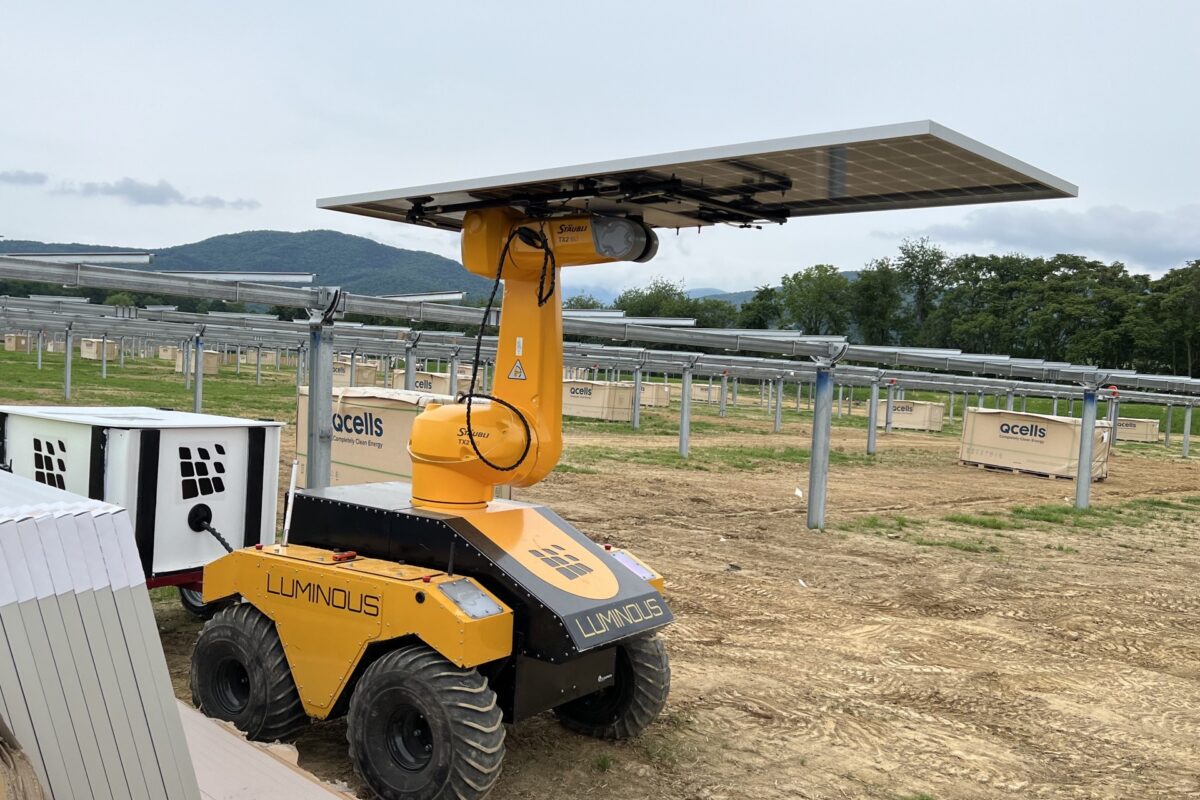As it’s the biggest lithium ion battery globally, the 100MW/129MWh Hornsdale battery is being closely watched by electricity market observers and has generated a lot of hype since its commissioning on December 1, 2017. However, owner Neoen has cautioned that it is unhelpful to read too much into trading activity over the last few weeks, in terms of the project’s profitability.
“It is performing well, it is doing its job, and it is serving the purpose of delivering energy services into the grid and backup reserve for which it has been designed,” Neoen Australia Managing Director Franck Wotiez told pv magazine.

However, as to whether the asset, often described as the Tesla big battery due to its high-profile supplier, has been able to charge and discharge during times at which it is highly profitable to do so, Wotiez is more circumspect.
“I wouldn’t like to comment too much,” said Wotiez. “First of all, not everything you’ve seen in the press and media is accurate and we need to be careful to analyse second-by-second the behaviour of such an asset. It also necessary to look at the bigger picture, it has to charge. There are [also] some obligations and constraints, operation costs, installation costs, investment.”
While confidential, the Hornsdale battery has a contract to provide grid stabilization services, under a contract with the South Australian government. Additional to that it can charge and discharge on the basis of market prices – arbitrage trading, which can be attractive when wholesale prices fluctuate wildly.
“It appears that Hornsdale is essentially a 30 MW battery with about four hours of storage and 70 MW battery with about ten minutes storage,” says Dylan McConnell, a researcher at the Australian German Climate and Energy College in Melbourne. “The latter is more for the frequency control and response – so very rapid injection of 70 MW.”
McConnell has observed Hornsdale discharging at the full 100 MW, however it can only provide this level for a short period of time – notably still within the five-minute requirement of the frequency stabilization market, given the battery is appropriately charged when required.
In recent weeks, there have been days in which Hornsdale has been able to charge while wholesale prices are negative, and discharge also when prices are high.
Simon Holmes à Court, an energy market observer and one-time community wind farm developer, has tracked such an instance. On January 18, a coal-fired generator on the National Electricity Market (NEM), the Loy Yang B power plant, tripped around the afternoon demand peak at 4:30pm. The outage removed 528 MW of power from the NEM, causing grid frequency to drop to 49.70Hz – below the ‘band’. Wholesale prices also spiked, up 15,000% to $13,000MWh.
Hornsdale_power_reserve_Jan_18_19
The 30 MW market participating component of Hornsdale leapt into work, selling $550,000 worth of electricity while prices were at their peak. Holmes à Court noted on Twitter: “It’s quite possible that some of the energy it sold was the energy it was paid to consume on Saturday!”
Looking at the week January 21-26, Holmes à Court noted that Hornsdale charged with 900 MWh of electricity at $153/MWh, costing around $137,500. It then sold that 700 MWh of that power for $1608/MWh, earning $1,125,800 – for arbitrage income approaching $1 million. “Not bad for a week’s work,” Holmes à Court drolly observed on Twitter.
Despite examples like this, Neoen MD Wotiez says that it is important to observe the battery over a full year to have a true understanding of its performance as an asset on the grid.
“We have some constraints, some obligations, commitments towards the government,” said Wotiez. “You [can] discharge when the prices are high, but then you need to charge because the government asked you to perform your obligation, and you have to charge when the prices are high then it’s bad luck.”
What is more important, he argues, is that Hornsdale is demonstrating a genuine business model for large scale battery storage on the NEM, in that it “addresses some basic needs of aging grids.” Importantly, the so-called Tesla big battery is replacing some synchronous generation in terms of the provision of grid stabilization. “So, it is a really good thing for the future of our industry.”
This content is protected by copyright and may not be reused. If you want to cooperate with us and would like to reuse some of our content, please contact: editors@pv-magazine.com.









3 comments
By submitting this form you agree to pv magazine using your data for the purposes of publishing your comment.
Your personal data will only be disclosed or otherwise transmitted to third parties for the purposes of spam filtering or if this is necessary for technical maintenance of the website. Any other transfer to third parties will not take place unless this is justified on the basis of applicable data protection regulations or if pv magazine is legally obliged to do so.
You may revoke this consent at any time with effect for the future, in which case your personal data will be deleted immediately. Otherwise, your data will be deleted if pv magazine has processed your request or the purpose of data storage is fulfilled.
Further information on data privacy can be found in our Data Protection Policy.